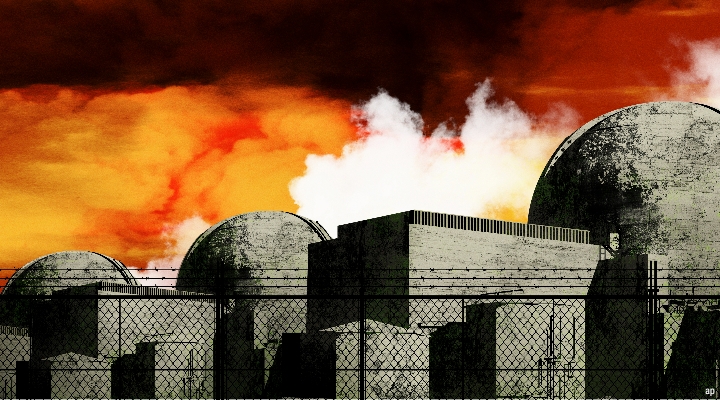Sustainable Funds Powerhouse Parnassus Weighs Investing in Nuclear Energy
The move reflects improving safety and Inflation Reduction Act credits, company official says.

In a sea change, Parnassus Investments, the sustainable funds powerhouse, is considering investing in nuclear energy, citing climate change and improved nuclear safety.
Specifically, Parnassus is weighing removing nuclear power from its list of excluded industries and companies. “Parnassus is interested in doing our part to promote our transition to the low-carbon world,” Marian Macindoe, head of ESG stewardship at Parnassus, said in an interview. Macindoe said nuclear safety has improved since Parnassus put the screen in the place in 1984.
“It’s reliable, it can be deployed on a large scale, and alleviates concerns about the energy transition,” Macindoe said. She also cited the Inflation Reduction Act provisions that support nuclear-power development.
Nuclear Energy Enjoys Boost From Inflation Reduction Act, EU Taxonomy
Once vilified because of nuclear accidents, use of uranium in nuclear weapons, and the high costs of plant construction, nuclear energy is enjoying a moment. Like renewables, nuclear power produces no direct carbon or greenhouse gas emissions. The Ukraine war also made finding alternatives to Russian energy a major priority for Europe. However, storage of radioactive waste remains a major problem for nuclear energy.
The Inflation Reduction Act of 2022 provides tax credits for existing and new nuclear power plants, including for advanced reactors and small modular reactors. The Biden administration has also committed to achieving 100% clean energy by 2035.
Meanwhile, the European Union decided to include it in its sustainable finance taxonomy, saying its assessment “did not reveal any science-based evidence that nuclear energy does more harm to human health or to the environment than other electricity production technologies already included in the taxonomy as activities supporting climate change mitigation.”
In California this year, lawmakers voted to keep Diablo Canyon, California’s last nuclear power plant, open for five more years. Meanwhile, the Biden administration is providing Pacific Gas & Electric with a $1.1 billion grant to help keep the plant open.
Safety, War in Ukraine Bolster Nuclear Use Case, Analyst Says
Alyssa Stankiewicz, associate director of sustainability research for Morningstar, says that any decision by Parnassus to drop its screen “reflects an evolving interpretation of what does and doesn’t qualify as ‘sustainable.’ In particular, European regulators appear inclined to include nuclear energy within its definition of sustainable investments.”
Indeed, Stankiewicz added, “nuclear energy technology has improved dramatically in recent decades such that it can be a clean and safe energy source, which will be all the more necessary following the war in Ukraine.”
To be sure, Stankiewicz says, any decision to remove the screen “does not necessarily mean Parnassus will invest in these industries. I expect Parnassus’ fundamental research team will continue to be selective about these opportunities, just starting from a broader opportunity set.”
Macindoe said Parnassus has received “broad support” from the people it’s spoken to about the move.
The boards of Parnassus’ five funds must vote on whether to stop excluding nuclear power, and the prospectus must be updated. If the boards approve the move, the earliest that the funds will be able to invest in nuclear energy is May 1, 2023.
Currently, the Parnassus funds exclude fossil fuels, nuclear energy, alcohol, tobacco, gambling, and weapons. The firm has one of the highest Morningstar ESG Commitment Level ratings, and it oversees about $40 billion in assets.
If Parnassus were to drop its screen, other fund companies may follow.
How to Invest in Nuclear
If you are interested in whether your fund has exposure to nuclear energy, check Morningstar’s product involvement screen, which looks at a fund’s involvement in 15 different controversial practices. You’ll find, for example, that 2.3% of the S&P 500 is involved in nuclear energy.
For a look at mutual funds and exchange-traded funds that own the largest utilities that use nuclear reactors, read my colleague Valerio Baselli’s excellent piece.
The author or authors do not own shares in any securities mentioned in this article. Find out about Morningstar’s editorial policies.

/s3.amazonaws.com/arc-authors/morningstar/d53e0e66-732b-4d50-b97a-d324cfa9d1f8.jpg)
/cloudfront-us-east-1.images.arcpublishing.com/morningstar/FGC25JIKZ5EATCXF265D56SZTE.jpg)
/d10o6nnig0wrdw.cloudfront.net/04-25-2024/t_d30270f760794625a1e74b94c0d352af_name_file_960x540_1600_v4_.jpg)
/cloudfront-us-east-1.images.arcpublishing.com/morningstar/DOXM5RLEKJHX5B6OIEWSUMX6X4.png)
:quality(80)/s3.amazonaws.com/arc-authors/morningstar/d53e0e66-732b-4d50-b97a-d324cfa9d1f8.jpg)